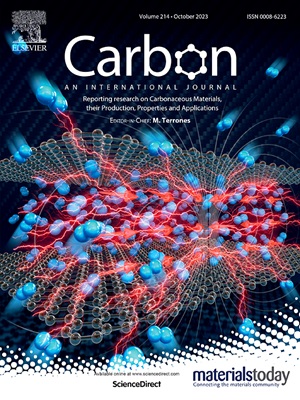3D self assembled graphene based cellulose acetate mixed matrix membranes for CO2/CH4 separation: An investigation
IF 10.5
2区 材料科学
Q1 CHEMISTRY, PHYSICAL
引用次数: 0
Abstract
This study investigates the development of three-dimensional (3D) Self-Assembled Graphene (SAG) and its potential as a filler material in mixed matrix membranes (MMMs) for efficient CO₂ separation. SAG was synthesized via a one-step hydrothermal treatment of graphene oxide (GO). Additionally, reduced graphene oxide (rGO) was synthesized via chemical reduction of GO and tested alongside SAG and GO as filler materials in cellulose acetate (CA) based MMMs. Structural and gas separation properties of SAG, rGO, and GO-based MMMs were compared to identify the superior material for CO₂ separation applications. Model biogas 40 % CO2 and 60 % CH4 is used for gas permeation testing. Characterization techniques such as X-ray Photoelectron Spectroscopy (XPS), Differential Scanning Calorimetry (DSC), Fourier Transform Infrared Spectroscopy (FTIR), Raman Spectroscopy, and X-ray Diffraction (XRD) were employed to evaluate the structural and thermal properties of the fillers and membranes. Gas permeation studies revealed that MMMs containing SAG exhibited superior CO₂ separation performance compared to rGO and GO-based membranes. The 1 % SAG/CA MMMs showed highest CO2 permeability of 50.96 Barrers which is approximately 364 % higher than pure CA membrane, 178 % higher than GO based MMMs, and 133 % higher than rGO based MMMs.

求助全文
约1分钟内获得全文
求助全文
来源期刊

Carbon
工程技术-材料科学:综合
CiteScore
20.80
自引率
7.30%
发文量
0
审稿时长
23 days
期刊介绍:
The journal Carbon is an international multidisciplinary forum for communicating scientific advances in the field of carbon materials. It reports new findings related to the formation, structure, properties, behaviors, and technological applications of carbons. Carbons are a broad class of ordered or disordered solid phases composed primarily of elemental carbon, including but not limited to carbon black, carbon fibers and filaments, carbon nanotubes, diamond and diamond-like carbon, fullerenes, glassy carbon, graphite, graphene, graphene-oxide, porous carbons, pyrolytic carbon, and other sp2 and non-sp2 hybridized carbon systems. Carbon is the companion title to the open access journal Carbon Trends. Relevant application areas for carbon materials include biology and medicine, catalysis, electronic, optoelectronic, spintronic, high-frequency, and photonic devices, energy storage and conversion systems, environmental applications and water treatment, smart materials and systems, and structural and thermal applications.
 求助内容:
求助内容: 应助结果提醒方式:
应助结果提醒方式:


